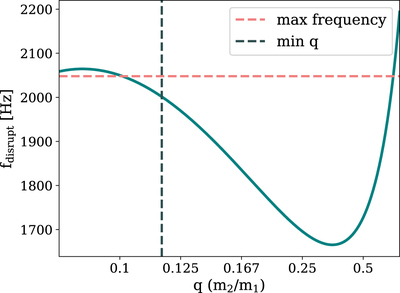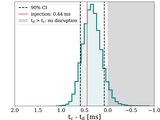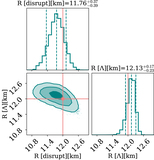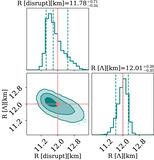Image Details

Caption: Figure 4.
The disruption frequency calculated from Equation (4) as a function of mass ratio for an NSBH system for an NSBH with m NS = 1.2 M ⊙, R NS = 12 km, and χ BH = 0.9. This system produced the lowest disruption frequency for any “reasonable” choice of parameters. Increasing the neutron star mass or decreasing the black hole spin or neutron star radius primarily shifts the curve upwards in frequency space. The optimal disruption frequency is ≈1660 Hz at a mass ratio of ≈1/3 . The dashed lines show the maximum frequency of the waveforms we use in parameter estimation and the minimum mass ratio for which the system is disruptive. Hence, only systems in the bottom right quadrant of the plot are both disruptive and have low enough frequencies to be potentially resolvable in our analysis.
Copyright and Terms & Conditions
© 2023. The Author(s). Published by the American Astronomical Society.








